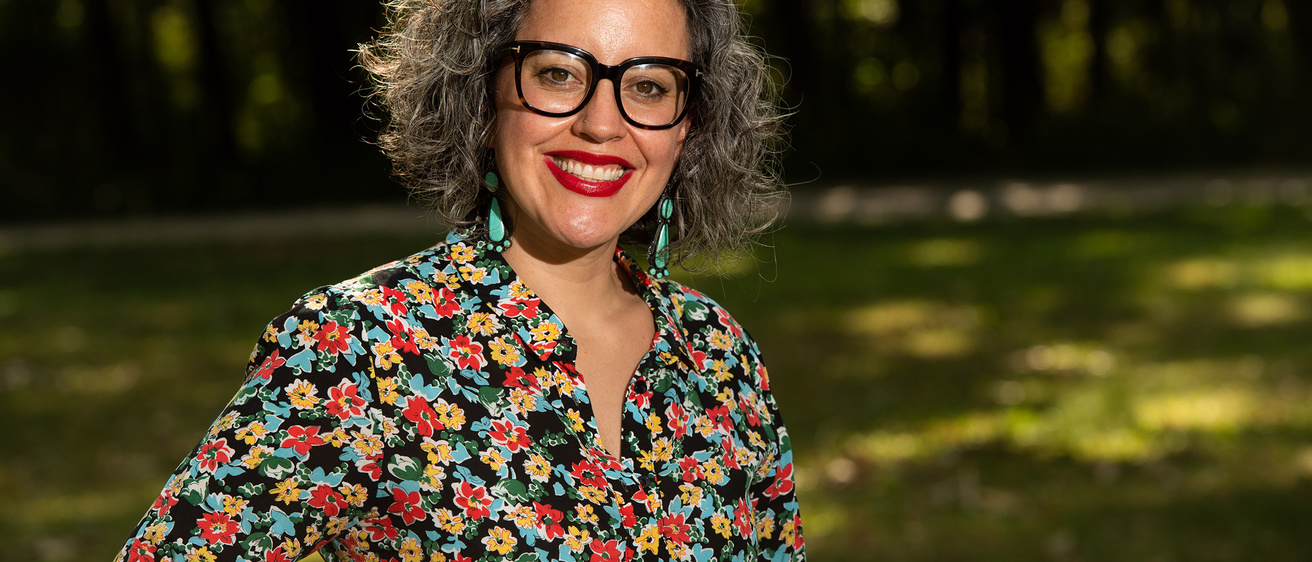Every month is Latinx/a/o Heritage Month for Lina-Maria Murillo.
Murillo joined the University of Iowa faculty in the Departments of History and Gender, Women’s, and Sexuality Studies in 2018, and she teaches Latinx/a/o History from Conquest to the Present, History of Social Justice Movements, Global Reproduction, and Introduction to Gender, Women’s, and Sexuality Studies.
“I understand why these months celebrating cultural heritage exist, but it’s always Latinx/a/o Heritage Month for me,” she says. “It’s a 12-month cycle. I am constantly thinking about diverse communities and cultures and how they crisscross and inform each other. I’m always teaching these histories."
Murillo, whose parents migrated to the U.S. from Colombia and settled in San Jose, California, was raised in a community steeped in social justice advocacy. Her father was active in the farm workers movement, and a mantra of her childhood was, “How do we live our lives creating more justice and more peace?” As a young scholar, Murillo studied the history of Latinas along the U.S.-Mexico border as well as reproductive health.
“We’re drawn to ‘big hero’ stories, but it takes a lot of labor and mundane tasks to physically organize people. It takes skill,” says Murillo, who earned a PhD in borderlands history from the University of Texas at El Paso and is writing a biography of abortion rights activist Patricia Maginnis. “I want to bring to the fore the voices of women we don’t realize exist, the ones that history oftentimes leaves out of the master narrative.”
To that end, Murillo’s goals are to write more about the history of Latinas and to teach those histories. She wants to arm her students with the tools they need to create a more hospitable world, and that requires looking at issues through a variety of lenses.
“I tell my students that we’re going to do this together. We are going to think critically about the intersections of race, gender, and class, especially now as we grapple with the pandemic and the twin oppressors, racism and misogyny. History provides an incredible window into the past and helps you be a more critical human in this world,” she says. “My students understand why people are protesting in the streets right now. It’s because we’ve been fighting racial injustice for the last 400 years.”
